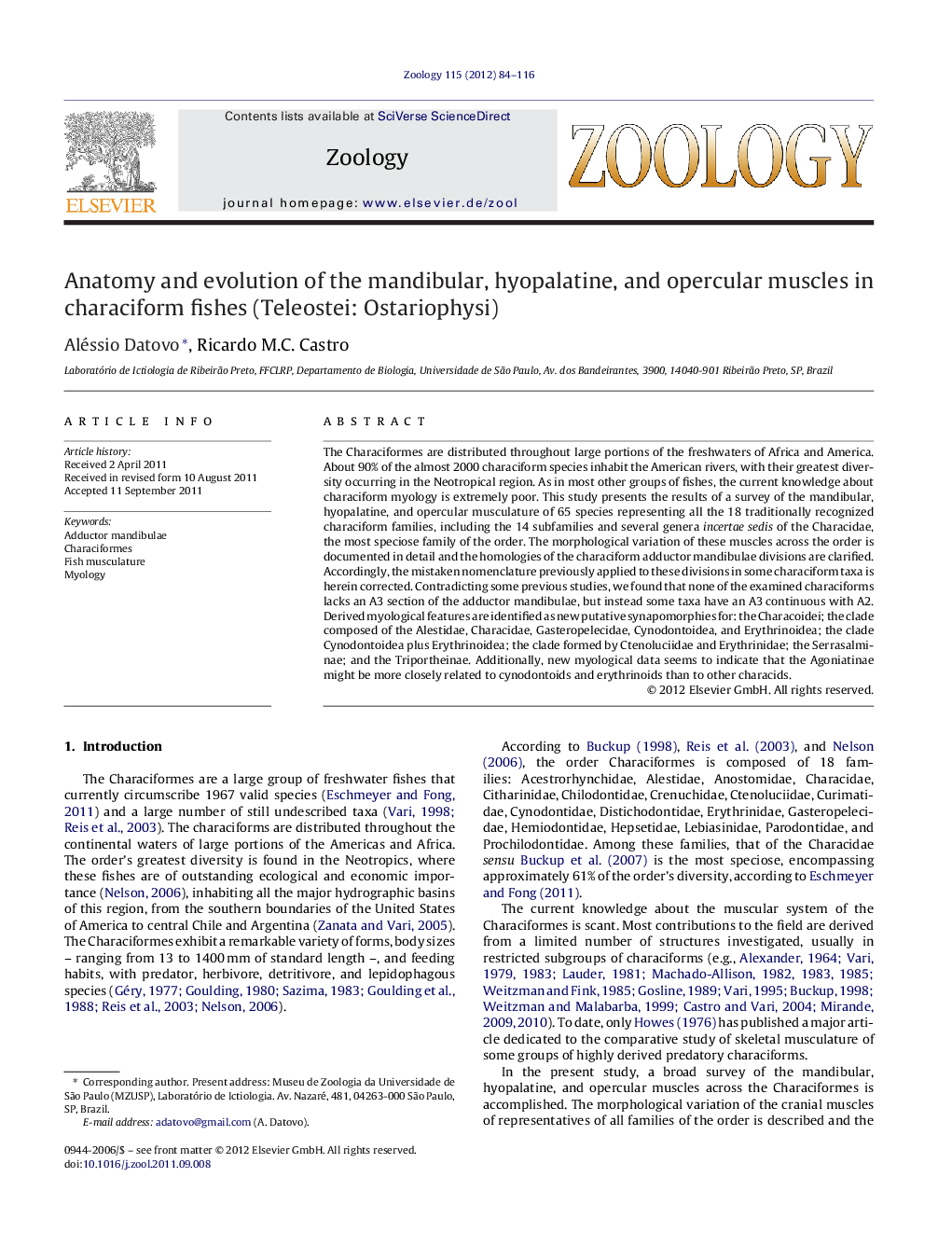| کد مقاله | کد نشریه | سال انتشار | مقاله انگلیسی | نسخه تمام متن |
|---|---|---|---|---|
| 2791040 | 1154834 | 2012 | 33 صفحه PDF | دانلود رایگان |

The Characiformes are distributed throughout large portions of the freshwaters of Africa and America. About 90% of the almost 2000 characiform species inhabit the American rivers, with their greatest diversity occurring in the Neotropical region. As in most other groups of fishes, the current knowledge about characiform myology is extremely poor. This study presents the results of a survey of the mandibular, hyopalatine, and opercular musculature of 65 species representing all the 18 traditionally recognized characiform families, including the 14 subfamilies and several genera incertae sedis of the Characidae, the most speciose family of the order. The morphological variation of these muscles across the order is documented in detail and the homologies of the characiform adductor mandibulae divisions are clarified. Accordingly, the mistaken nomenclature previously applied to these divisions in some characiform taxa is herein corrected. Contradicting some previous studies, we found that none of the examined characiforms lacks an A3 section of the adductor mandibulae, but instead some taxa have an A3 continuous with A2. Derived myological features are identified as new putative synapomorphies for: the Characoidei; the clade composed of the Alestidae, Characidae, Gasteropelecidae, Cynodontoidea, and Erythrinoidea; the clade Cynodontoidea plus Erythrinoidea; the clade formed by Ctenoluciidae and Erythrinidae; the Serrasalminae; and the Triportheinae. Additionally, new myological data seems to indicate that the Agoniatinae might be more closely related to cynodontoids and erythrinoids than to other characids.
Journal: Zoology - Volume 115, Issue 2, April 2012, Pages 84–116